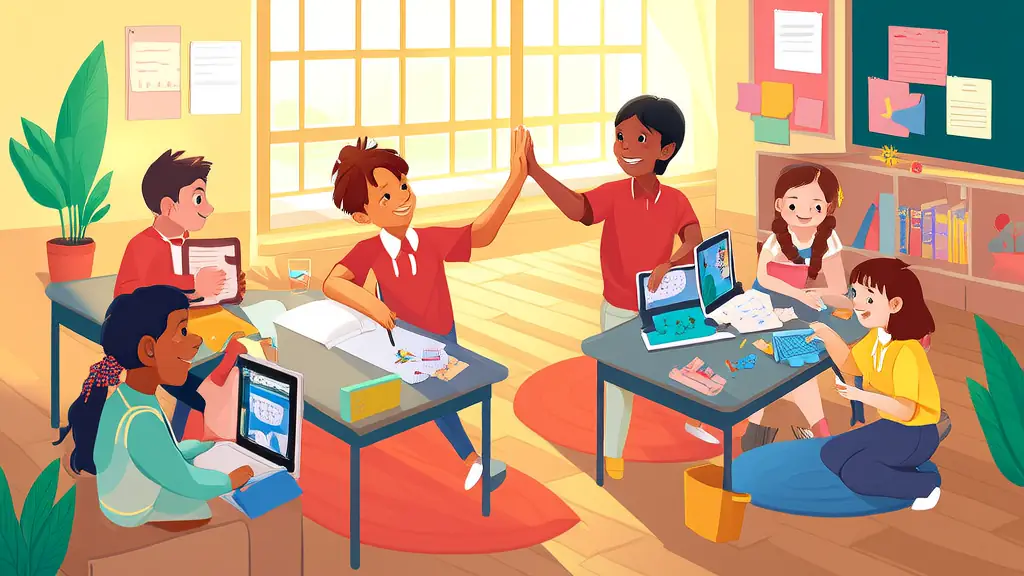
Empowering the Next Generation: Navigating K12 Education in 2025
Welcome to a new era of learning, where the landscape of K12 education is rapidly evolving. As we stand on the cusp of transformative changes, it's crucial for parents and educators alike to stay informed about the latest teaching methodologies, child development insights, and technological advancements that are shaping our children's future. This post aims to provide a comprehensive overview, offering practical tips and inspiring success stories to guide you through this exciting journey.
The Power of Project-Based Learning (PBL)
One of the most promising trends in K12 education today is the shift towards Project-Based Learning (PBL). Unlike traditional rote learning, PBL encourages students to engage deeply with content by working on real-world projects. This approach not only enhances their critical thinking and problem-solving skills but also fosters creativity and collaboration. For instance, a group of 8th graders in California recently completed a project on water conservation, designing and implementing solutions that were later adopted by their local community. Such hands-on experiences make learning more meaningful and memorable.
Actionable Advice: Teachers can start small by integrating mini-projects into their curriculum. Parents can support this at home by encouraging children to explore topics they're passionate about and guiding them in creating simple projects or presentations.
Understanding Child Development: Insights from Neuroscience
Recent advances in neuroscience have provided valuable insights into how children learn and develop. It's now widely recognized that every child has a unique learning style and pace. For example, some children may thrive in structured environments, while others excel with more flexible, exploratory approaches. Understanding these differences can help educators and parents tailor their methods to meet individual needs, thereby enhancing learning outcomes. Research also highlights the importance of emotional well-being in academic success, suggesting that supportive, nurturing environments are key to fostering both cognitive and social-emotional growth.
Actionable Advice: Educators should consider incorporating a variety of teaching methods and assessments to accommodate different learning styles. Parents can play a crucial role by providing a stable, supportive environment at home and being attuned to their child's emotional needs.
Educational Technology: Tools for the Future
Technology continues to revolutionize the way we teach and learn. From interactive whiteboards and educational apps to virtual reality (VR) and artificial intelligence (AI), the tools available to educators and students are more advanced than ever. For example, VR can transport students to historical events or distant planets, making abstract concepts tangible and engaging. AI-powered platforms, like Duolingo for language learning, use adaptive algorithms to personalize the learning experience, ensuring that each student receives instruction at the right level of difficulty.
Actionable Advice: Schools should invest in training teachers to effectively integrate technology into their classrooms. Parents can explore educational apps and online resources to supplement their child's learning at home, but it's important to balance screen time with other activities.
Building Bridges: Success Stories and Case Studies
Inspiration often comes from seeing what's possible. One such story is that of a rural school in India that transformed its educational outcomes through a combination of innovative teaching methods and community involvement. By adopting a flipped classroom model, where students watch video lectures at home and do "homework" in class, the school was able to provide more personalized attention and support. Additionally, the school partnered with local businesses to create internship opportunities, giving students practical experience and a sense of purpose. As a result, graduation rates and college admissions soared, demonstrating the power of collaborative, forward-thinking approaches.
Actionable Advice: Look for ways to involve the broader community in your child's education. Whether it's through partnerships with local organizations or inviting guest speakers, these connections can enrich the learning experience and provide valuable real-world context.
Conclusion: A Call to Action
The world of K12 education is dynamic and full of potential. By embracing the latest teaching methodologies, staying informed about child development, leveraging educational technology, and learning from success stories, we can create an environment where every child can thrive. Let's work together to empower the next generation, equipping them with the skills, knowledge, and confidence they need to succeed in an ever-changing world.
Join us in this journey of discovery and growth. Together, we can make a difference in the lives of our children and shape a brighter future for all.